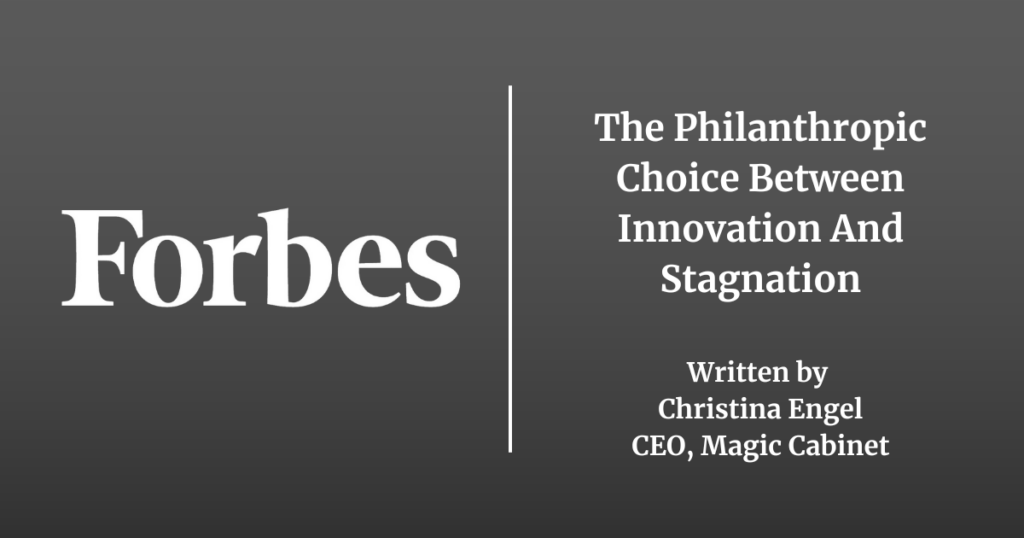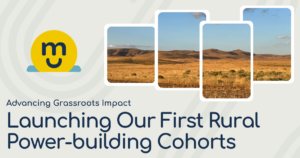
Philanthropy was built backward—it started with creating systems, strategies, and outcomes instead of rooting itself in understanding, relationships, and trust. To realize progress, philanthropic leaders must engage in introspection, questioning the systems they have created and are now responsible for stewarding. Have we upheld the community’s trust? Do we understand the real needs of the communities we serve? Have we built strong, resilient networks? Are our actions increasing equity or creating further disparities?
Philanthropy has an opportunity to pivot from the hierarchical giving models of the past toward reciprocal relationships built on trust, inclusion, and transparency. Stewarding private wealth for the public good has always required managing uncertainty and navigating unbalanced power dynamics. But what is needed now goes beyond incremental changes. The magnitude of interconnected social inequities demands a deeper realignment of philanthropy’s cultural ethos.
Examining Hierarchical Giving Models
Philanthropic giving has long operated through hierarchical systems that endow significant power and control to foundations while relegating community organizations to fulfill narrow, restricted funding priorities. This imbalance hamstrings nonprofits’ effectiveness.
Grantees often have deep insights into the evolving needs and dynamics of the communities they serve. Yet they are forced to continually shift programs to fit funder-dictated metrics and solutions without a seat at the table to shape more responsive, emergent strategies. It’s common for a funder to identify an issue and expect the groups they fund to change their strategies to meet the funder’s predetermined remedy. This undermines the expertise of the organizations working on the frontlines, straining their relationships with their community.
At the same time, foundations are rarely held accountable for how they show up in partnerships beyond assessing whether a grantee achieves the stated benchmarks. As funders exert significant influence over strategy, they should also reflect on the efficacy of their processes. However, a transparent assessment of funder effectiveness is rare.
To shift from perpetuating harm to fostering reciprocal relationships, philanthropy must rebalance its accountability and share decision-making power with grantees and community stakeholders. This calls for relationship-based grantmaking that invites diverse perspectives to shape responsive funding centered on community priorities, not top-down mandates. The path forward lies in restructuring systems to elevate equitable, participatory partnerships.
Moving Beyond The Status Quo
Navigating complex social challenges requires philanthropy’s willingness to move beyond status-quo funding models and take informed risks. This cultural shift asks philanthropic leaders to pilot more experimental initiatives attuned to community insights even when the long-term impact is unclear.
Informed risks acknowledge uncertainties but are grounded in community-centered analysis. And what constitutes an informed risk will differ across stakeholders. Here are two examples of what this might look like:
- Increasing annual grantmaking from 5% to 7% of assets to direct more capital amid economic instability.
- Launching participatory grantmaking that shares power and decision-making with the community.
Centering Flexibility And Responsiveness
True responsiveness requires funders to balance economic sustainability with nimble adaptation when crises emerge. This means structuring programs and partnerships for flexibility even when long-term financial outlooks are unclear.
Many foundations rely on restricted, project-based grants that limit an organization’s ability to respond to shifting needs in real time. Nonprofits are often forced to make grandiose statements tying funding to predetermined outcomes when the on-the-ground reality is far more complex.
Meanwhile, the uncertainty of financial markets and reduced assets due to economic downturns can limit grantmaking when communities need support most. By taking an adaptive approach of shorter-duration grants, simplified reporting requirements and support for leadership to implement responsive changes, philanthropy can support partners in addressing emergent needs while also planning for long-term sustainability. Funders have a responsibility to build in resiliency and stand shoulder-to-shoulder with grantees when new challenges emerge.
The key is balancing organizational stability with community focus when designing systems and maintaining open communication to adjust expectations in times of flux. As leaders, we need to create—and embrace—a culture in which it’s alright to be uncomfortable and admit we don’t fully grasp every variable. Centering flexibility as circumstances evolve is difficult but critical for impact.
Driving More Equitable Change
Getting to the root of ingrained inequities requires concrete steps by funders to cede and share power. This redistribution can result in targeted policies and practices grounded in both economic realities and community needs. With flexibility often comes great freedom but also great responsibility. As stewards of wealth intended for the public good, philanthropic institutions must reflect honestly on who controls decisions, resources, and the narrative.
Funders have tremendous influence in driving change at scale by granting significant funds. The question becomes how to equip those most impacted by injustice to lead lasting solutions. This requires listening to community voices when setting priorities and expectations. It also means simplifying restrictions and multi-year commitments to sustain organizations addressing the root causes of inequity, as well as welcoming criticism and accountability measures to chip away at systemic imbalances.
Ultimately, power shifting is about actions, not words. If funders aren’t taking risks, rethinking support, or sharing the leverage inherent in connections and wealth, then they accept the status quo as good enough. If we’re honest, the philanthropic sector as a whole has historically underperformed, and current “best practices” aren’t cutting it. It’s time to take smart risks.
See the original posting on Forbes.



